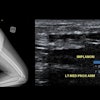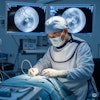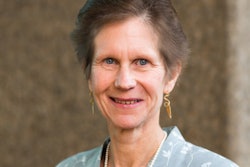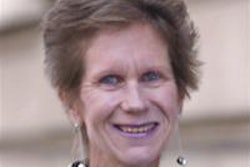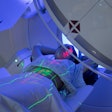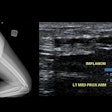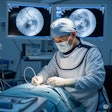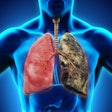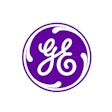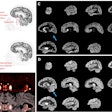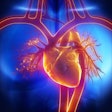
Around 40% of radiologists in the U.K. National Health Service (NHS) are not having their reporting checked, and this is one of the greatest weaknesses of NHS radiology when it comes to quality, a leading teleradiologist told delegates at this month's British Institute of Radiology (BIR) annual congress.
"The greater the workload and the fewer support staff available, then the more likely errors will occur," said Dr. David Wilson, clinical audit lead at Medica, a major provider of teleradiology to the NHS, and BIR past president. "In my experience, having worked in both public and private sectors, governance in teleradiology is way tighter than it is in the NHS."
Teleradiology provides the best quality-controlled reporting available, he continued, adding that he wouldn't have switched to his current job if he didn't think he would be able to provide a better service than he did when he was a medical director in the NHS.
Unconventional working hours
Teleradiology providers have key advantages over the conventional NHS service in terms of working hours, and they can step in to help out when staffing levels fall short of requirements, Wilson noted. If a radiology department suddenly finds it has a backlog of 500 scans without sufficient staff to deal with them, it can send the images electronically to a teleradiology service that has the ability to connect with the NHS reporting system and return results directly to the hospital, he explained. Also, providers can be ready to handle emergencies in the middle of the night if need be.
 Most errors are due to fatigue, being interrupted, or going too fast, Dr. David Wilson said.
Most errors are due to fatigue, being interrupted, or going too fast, Dr. David Wilson said.Most teleradiologists in the U.K. are NHS radiologists who take on extra work from home, but some have left the NHS and work full-time in teleradiology, Wilson said. There is an argument that the teleradiology service uses the same radiologists who would have been doing the same work in the NHS so it does not alter the overall workforce issues, he said. But it does bring some people back into service who wouldn't be working otherwise, either due to home arrangements, small children, being retired, or because they live abroad.
Furthermore, prior to teleradiology, if a patient required images reported at night, the radiologist would be woken up, would need to drive to the hospital, get set up, and report, which all takes a few hours and leaves the radiologist exhausted for the next day's list, he said. With teleradiology, radiologists can work all night on shift.
"If a patient comes in after a car crash with multiple injuries, needing a full body scan including head, chest, abdominal, and bone scans, then this requires at least three specialist radiologists," Wilson said, adding that the regular general hospital would be stretched to report these images to the standard required because only one on-call radiologist would come in, with limited skills. On the other hand, an online company can provide specialist skills from three or four experts at once.
For these reasons and others, around 92% of nighttime radiology is covered by teleradiology today, he said. "It's the obvious answer because teleradiology can do a turnaround of one hour, scan to report, but using older systems, the radiologist would not even have arrived at the hospital."
Working outside the hospital
Being removed from the NHS environment can change the nature of reporting because a teleradiologist is not physically in the hospital and cannot liaise in person with colleagues, Wilson admitted, but he added they compensate for this with more comprehensive reporting.
"We produce a more detailed report because the referring clinicians have to believe that everything has been gone through properly," he said. "We are also introducing the concept of a virtual multidisciplinary team -- there's no reason why a meeting can't be electronic."
From the point of view of working practices, teleradiology companies may have much tighter control systems, and the reason for the tighter control in teleradiology companies is because when the NHS started using their services, they were concerned about outsourcing and maintaining standards so they required images to be second read, according to Wilson.
"Most teleradiology companies audit around 10% of the time. If a discrepancy is found then it goes to a governance committee. This does not happen in the NHS," he said.
Most teleradiologists are either jointly working for the NHS or were at some point an employee of the organization. Their standards are good, but occasionally their work might not be up to the mark, and if they are in a teleradiology environment, then there is a better chance of this being picked up and rectified, he continued.
"Sometimes we repeat examinations or take people off an area and might re-train them," Wilson said, relating the story of one of their teleradiologists who struggled with knee scans because the person had not been trained in this area. "We sent them on a course, gave them a hundred scans to read with a radiologist experienced in knees, and then that individual was better than the average."
Oxford audit
Wilson carried out a survey at the John Radcliffe Hospital, Oxford, to look at 684 discrepancies or errors, representing 2% of their patients. "Most were missed fractures, 41 in the ankle in adults, 21 in fingers in children. There were also a lot of false positives from the A&E [accident and emergency] team who put people in plaster for a normal variation," he said.
He noted the more experienced the radiologist, the fewer the false positives. "With these data, we realized that with 42% of these cases, the management of the patient changed after second review. The costs of these reports were 19,500 pounds [21,750 euros] per year due to the second read, but the potential legal costs could be huge," he said.
Effectively, this meant that by second reading, the NHS saved costs. Also, the important point is to use audit not to just check quality, but also to improve quality, he said.
Cause of errors
Wilson then addressed why errors or discrepancies happen in the first place. He highlighted these were almost always due to fatigue, being interrupted, or going too fast.
"It is never to do with complicated diagnoses. It's the missed areas under the diaphragm, the missed cerebral hemorrhage, that the same doctor would see a second time and see the missed item," he said, emphasizing that being systematic can guard against this. "I like to see the major abnormality, then go back to it later once I've looked at the rest of it. That way I look at things I'm not going to look at first before going back to the main problem."
One idea being advanced is that NHS hospital groups should create their own teleradiology system.
"This has the advantage that the hospital has someone reporting that they know, but by definition only a small proportion will because you have to have a big group to do this," Wilson stated.
The downside is that infrastructure would be extensive because the group would require an IT department that can interface with all the different systems that vary by hospital. He also noted that machines and systems would need to be installed in all the radiologists' homes and these need to be monitored, maintained, and updated. Furthermore, a capital investment would be necessary at a cost of around 8,000 to 10,000 pounds (8,929 euros to 11,162 euros) per workstation, plus an infrastructure that handles all the communications.
Medica has 80 employees in one location that deals only with this area. "The NHS could do this, but it would need to provide this 24 hours a day, 365 days a year. I see no reason why they shouldn't, but the NHS is struggling as it is."


